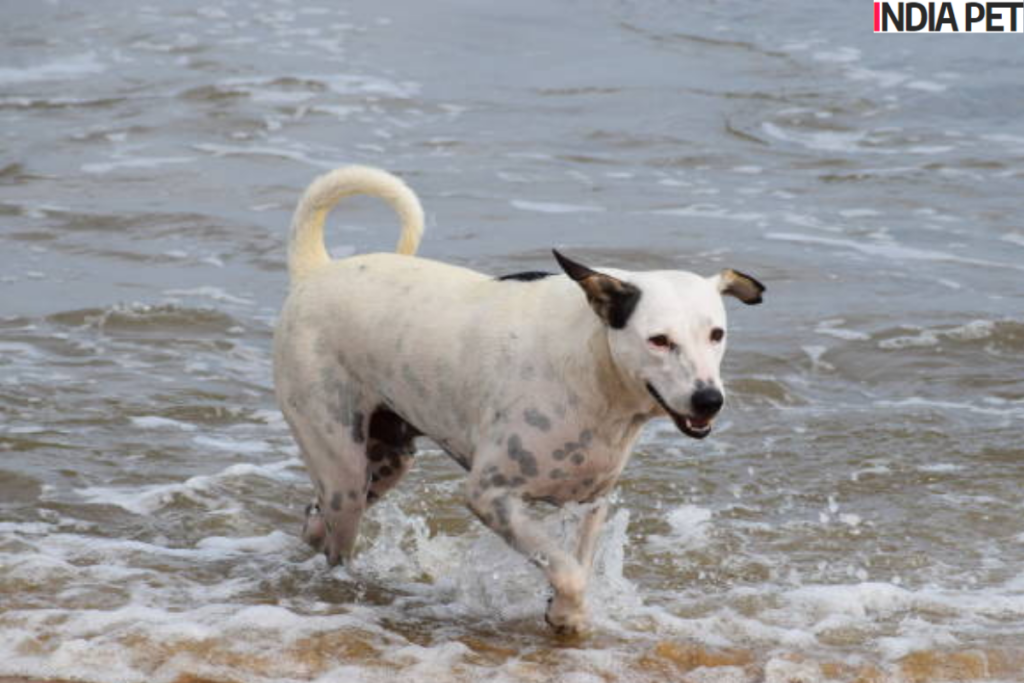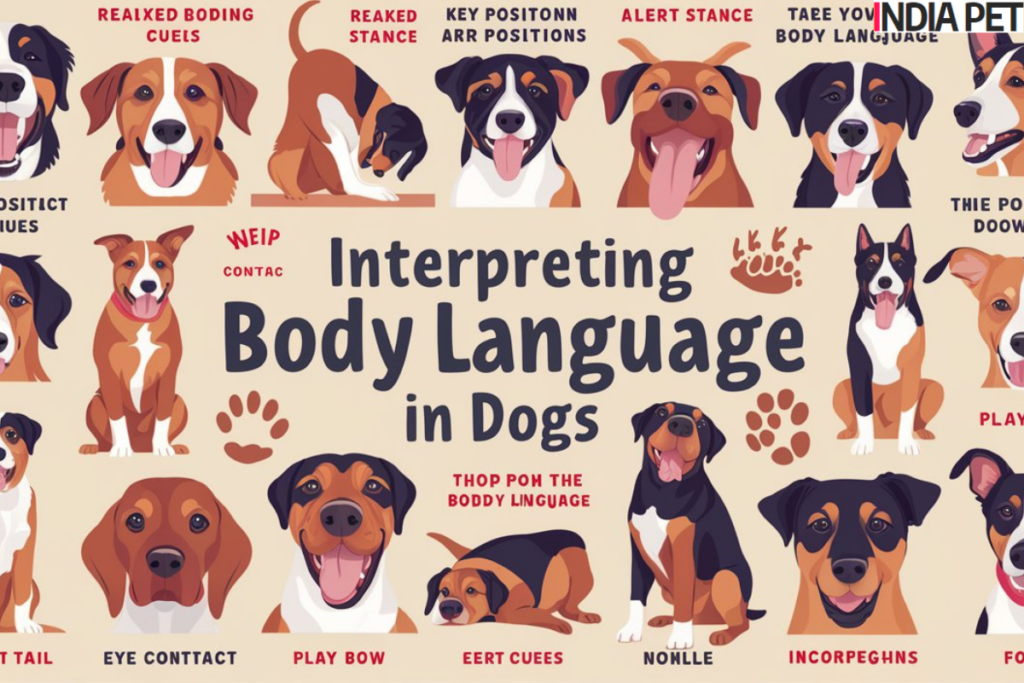Interpreting Body Language in Dogs – Understanding a dog’s body language is crucial for ensuring their well-being and fostering a strong bond. Dogs communicate primarily through non-verbal signals, and recognizing these can help you respond to their needs, emotions, and intentions. Here’s a concise guide to interpreting the language of dogs through their body parts and behaviors.
Interpreting Body Language in Dogs
The Language of Dogs
Dogs express themselves through various signals, including facial expressions, body posture, and movements. Each part of their body can provide important clues about their current state of mind and feelings.
Ears
- Ears Forward: Indicates curiosity, attentiveness, or excitement.
- Ears Back: This can signify fear, submission, or aggression, depending on the context.
- Ears to the Side: Often a sign of relaxation or contentment.
Also read : Dogs With Long Ears {2024}
Eyes

- Soft, Relaxed Eyes: Show that a dog is comfortable and relaxed.
- Hard Stare: This can be a sign of dominance or aggression.
- Squinting or Avoiding Eye Contact: Often a sign of submission or stress.
- Rapid Blinking: This may indicate anxiety or a desire to calm down.
Mouth
- Relaxed Mouth: Indicates that the dog is calm and content.
- Lips Drawn Back: This could mean the dog feels threatened or aggressive.
- Bared Teeth: A clear sign of aggression or a warning to back off.
- Panting: This can be normal in warm weather or after exercise, but excessive panting can also signify stress or discomfort.
Tail
- Tail Wagging: Generally a sign of happiness or excitement, but the speed and position can give more context.
- Tail Held High: Indicates confidence and excitement.
- Tail Between Legs: A sign of fear, submission, or anxiety.
- Slow Wagging or Stiff Tail: This can suggest uncertainty or aggression, depending on the rest of the body language.
Body Posture
- Relaxed Body: Shows that the dog is calm and at ease.
- Rigid Body: This can indicate tension, aggression, or discomfort.
- Cowering or Low Posture: A sign of fear or submission.
- Play Bow: When a dog lowers their front end while keeping the back end up, it is a clear invitation to play.
Also read : Essential Tips to Know Before Adopting a Puppy [Updated2025]
Calming Signals
- Yawning: Dogs may yawn to signal stress or to calm themselves and others.
- Licking Lips: Often a way to self-soothe or to communicate nervousness.
- Turning Away: Shows that the dog is trying to avoid confrontation or is feeling uncomfortable.
- Shaking Off: This can be a way to relieve stress or transition between different emotional states.
Signs of Anxiety or Stress

- Excessive Barking or Whining: This Can indicate that the dog is anxious or distressed.
- Pacing: Often a sign of nervousness or inability to settle.
- Hiding or Seeking Isolation: Shows that the dog is feeling overwhelmed or scared.
- Destructive Behavior: Chewing or digging can be signs of high stress or anxiety.
Also read : Why Indian Mongrels Are the Best Pets [Updated 2025]
Assertive or Aggressive Body Language
- Stiff Posture: A sign that the dog is feeling assertive or aggressive.
- Growling: Indicates a warning to back off and can escalate to more aggressive behavior if ignored.
- Showing Teeth: A clear sign of aggression and a warning to stay away.
- Direct Stare: This can be a challenge or a sign of dominance.
Happy and Relaxed Body Language

- Loose and Wiggly Body: This shows the dog is happy and relaxed.
- Playful Behavior: Bouncing, playful barking, and wagging tail indicate that the dog is in a positive mood.
- Relaxed Face: Soft eyes and a relaxed mouth are signs of contentment.
- Rolling Over: A dog showing its belly can indicate trust and relaxation.
Conclusion
Understanding and Interpreting Body Language in Dogs is essential for building a solid and trusting relationship. By paying attention to a dog’s ears, eyes, mouth, tail, and overall body posture, you can better respond to their needs and ensure their emotional well-being. Whether your dog is expressing happiness, anxiety, or assertiveness, recognizing these signals will help you provide the appropriate care and create a positive environment for them.
Frequently Asked Questions
How can I tell if my dog is happy?
Look for a loose, wiggly tail, a relaxed body posture, and soft eyes and mouth. These signs indicate that your dog is content and at ease.
What does it mean if my dog's ears are pulled back?
Ears pulled back can signal fear, anxiety, or submission, and it’s important to consider other body language cues for a complete picture.
Why does my dog yawn a lot?
Yawning can indicate stress or anxiety but is also a normal behavior when a dog is relaxed or tired.
What does it mean if my dog shows its teeth?
Showing teeth is often a sign of aggression or fear, serving as a warning to back off.


